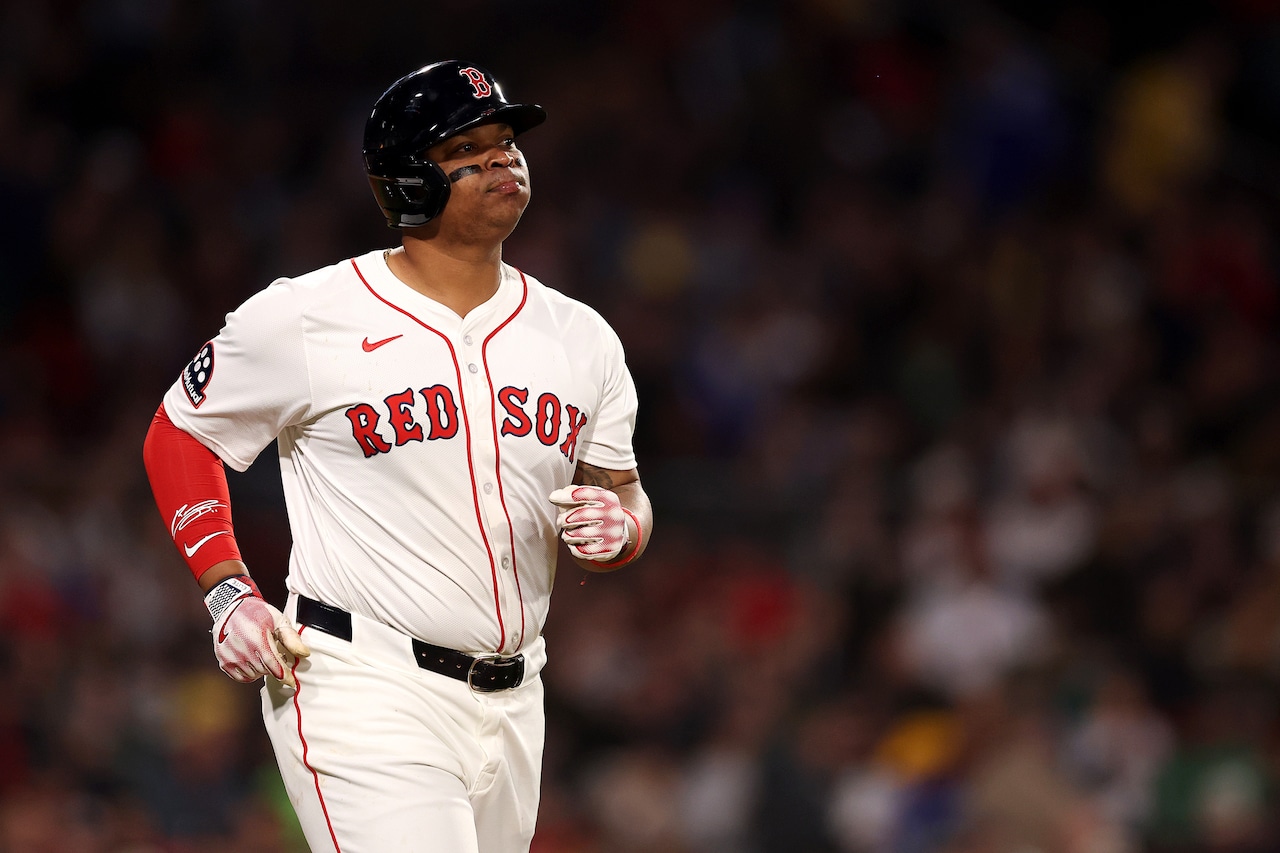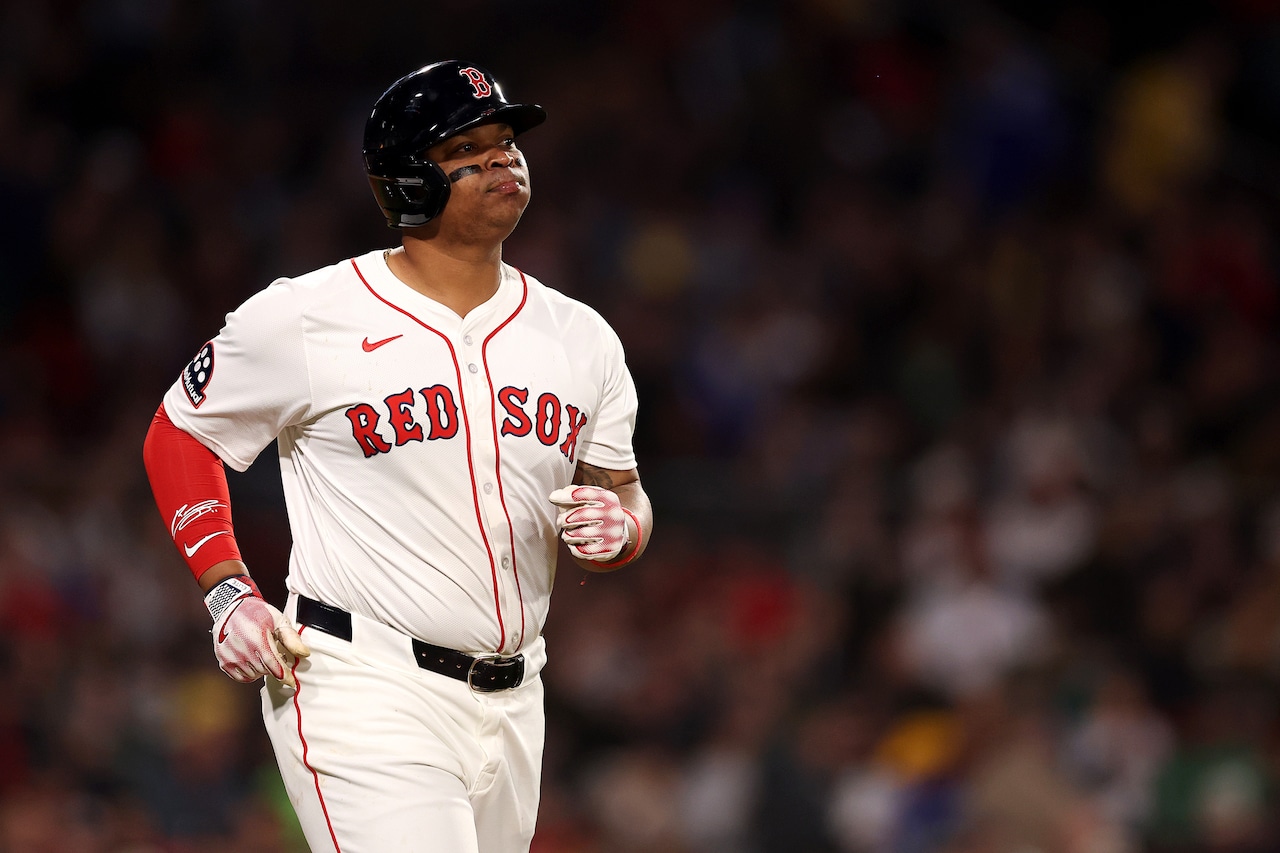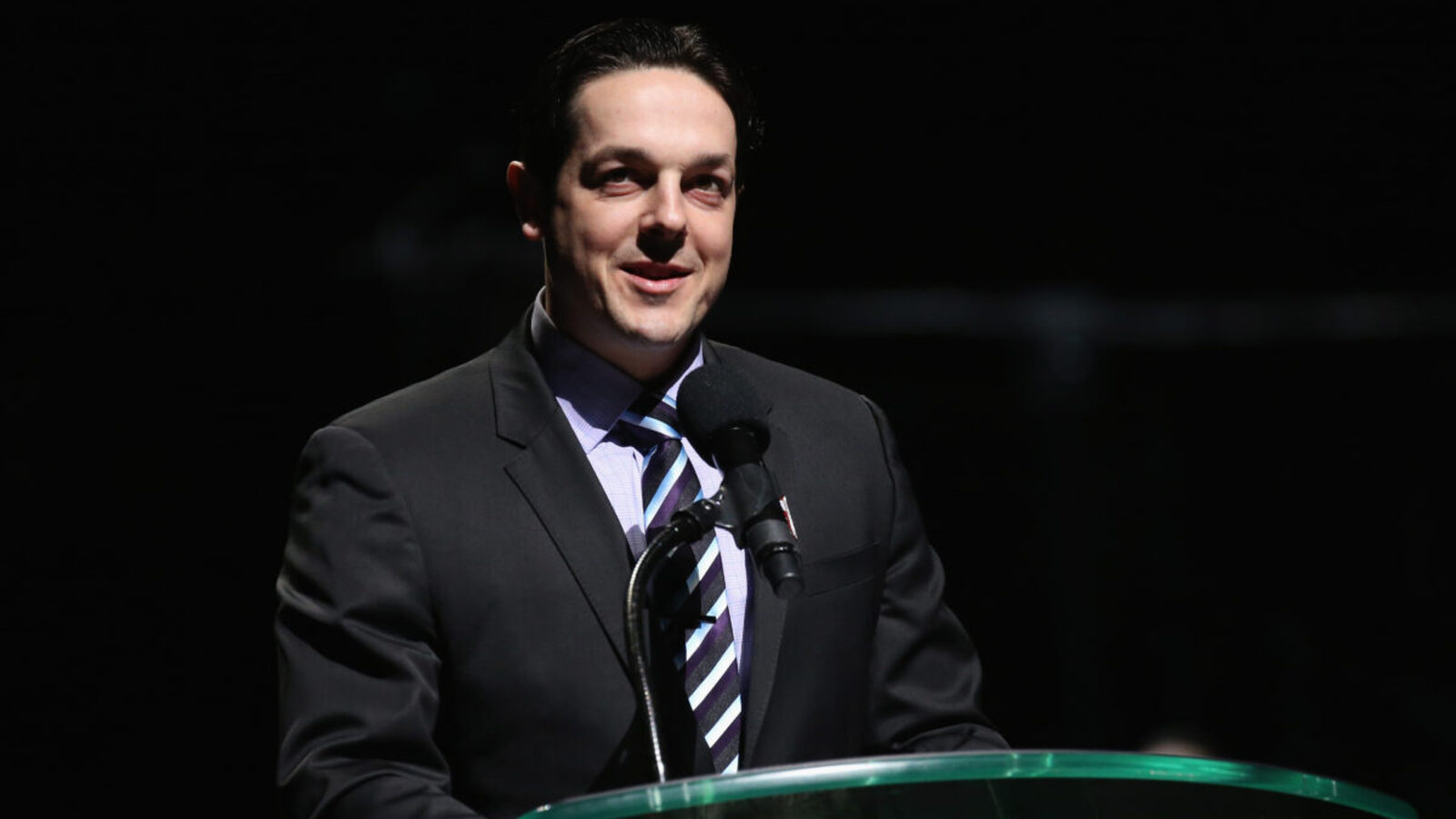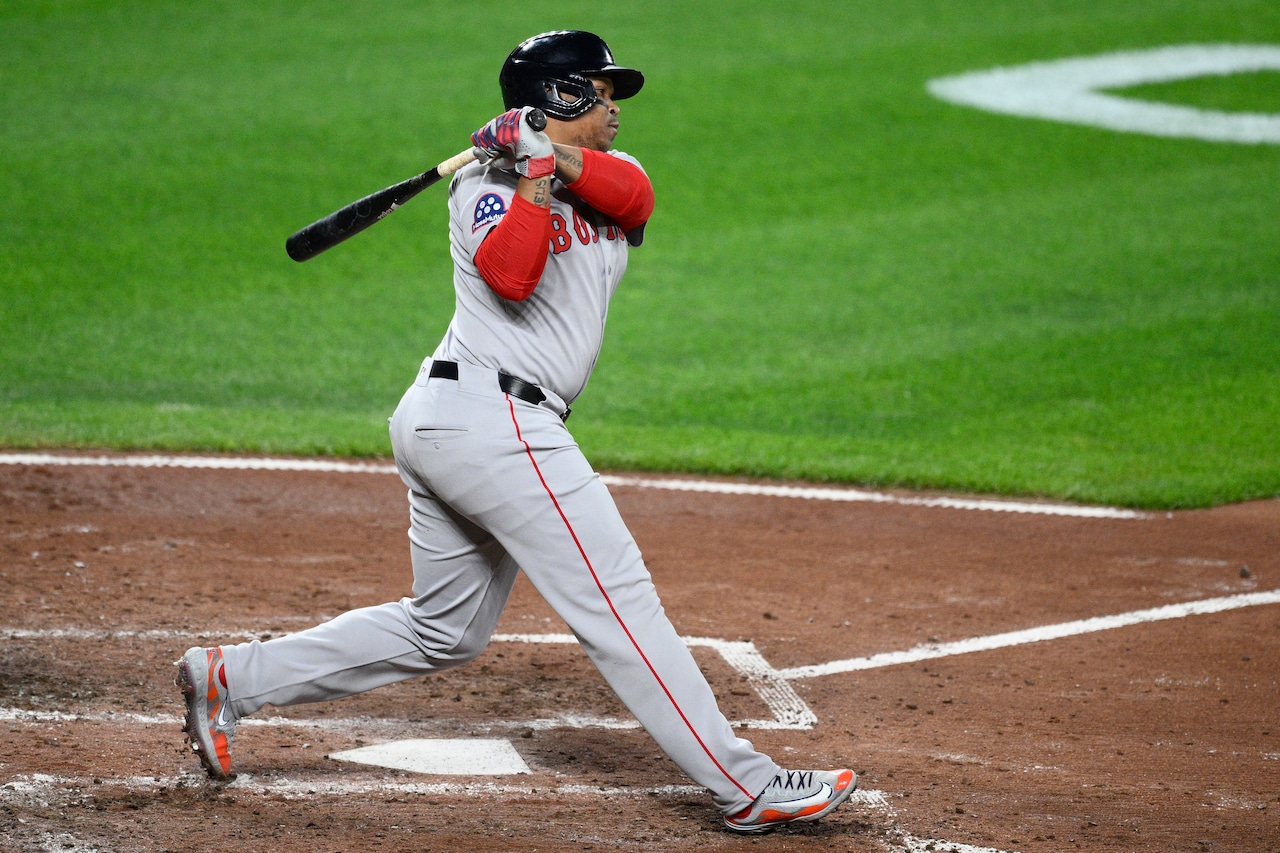
BOSTON — If there’s anyone who can relate to the transition being made by Rafael Devers, it’s Edgar Martinez.
After eight years as the Seattle Mariners’ third baseman, Martinez was shifted to full-time DH. Like Devers, Martinez had struggled defensively at third base. Also like Devers, he wasn’t convinced it would be a good career move.
As it turned out, it was the best thing imaginable for Martinez. He would go to win two batting titles, four Silver Sluggers and be named to six All-Star teams.
And in 2019, in his final year of eligibility, he was elected to the Hall of Fame. Not bad for a guy who could “only” hit.
Martinez has watched the Devers changeover from afar and understands the challenges more than most.
“For me, I struggled at the beginning,” said Martinez, who now serves as senior director of hitting strategy for the Mariners, “and it was more about accepting that that was now my role. At some point, I had to come to the realization that the team was winning, we were playing well and the team was better (with me as DH).
“Once I accepted and embraced it, I could move on and find a good routine that can help me excel in the role. But accepting it, that was the toughest part. You don’t know where your career is going to go. What happens if I have a month or two without producing? I wasn’t playing in the field, so if I don’t (contribute with bat)…?”
For Devers, job security is less of an issue. He has nine years remaining on a guaranteed contract that will pay him more than $280 million from the Red Sox. That contract may bring with it extra scrutiny if he fails to perform, but at least Devers doesn’t have to worry about losing his roster spot or getting released.
As Martinez remembers, it took a “couple of months,” to settle into the DH spot. He needed to find a routine that worked for him and how to best occupy his time between at-bats.
“You have to have a routine with your training,” Martinez said, “because if you’re not moving around a lot, you can get out of shape very easily. You have to have a routine throughout the day. For me, it started in the morning with how I prepared for the game and during batting practice and the game, I had my routine — whether it was hitting off the tee, or during the game, it had to do with hitting off the tee, hitting off the machine, riding the bike, getting my legs ready.
“And there was a mental part, too — anticipating situations during the game. Watch the pitcher, how he’s attacking our lineup and paying attention (to the little things). All of that kept me more involved in the game, so I wasn’t just sitting there, thinking about my at-bats.”
That’s a pitfall of the role, Martinez noted. Especially when a player is slumping, it’s easy to dwell on the last plate appearance and what went wrong. The key, he said, was paying attention and preparing for the next at-bat.
“For someone trying to hit,” he said with a chuckle, “thinking too much is not a good thing.”
For much of Martinez’s career, players didn’t have the use of IPads to study the most recent at-bat.
“I used some video,” he recalled, “but when I was happy with my swing, I might just focus on the pitcher. We used to rely a lot on watching the pitcher (from the dugout), every pitch. If you have too much information, it’s not good. You don’t have the right focus. Hitting a baseball should be simple — you see it and you hit it. And I found that that simple approach was when I did really well.
Even since Martinez’s election to the Hall of Fame, the position of DH has changed rather dramatically. The exclusive domain of the American League for decades, it became universal in 2022, with the National League adopting it, too.
Since its inception in 1973, Major League Baseball has annually honored the DH of the year. In 2004, MLB renamed the award in honor of Martinez. (Ironically, while Martinez won the award five times, the Red Sox’ David Ortiz won it on eight occasions. Shohei Ohtani has won it each of the last four years and seems a lock to top Ortiz’s total by the time he retires).
But in recent years, teams have begun to treat the role differently. While a handful of teams go with an elite hitter almost every game — Ohtani, Houston’s Yordan Alvarez, the Yankees’ Giancarlo Stanton and a few others — the majority of clubs like the flexibility of rotating players through the position.
With just four reserve position players on each roster, teams like the idea of prioritizing versatility.
“It’s not like it used to be,” acknowledged Martinez. “Now, the DH could be used to give a guy a break (from playing a defensive position), a guy who’s been playing every single day. So, it has changed. I can’t think of many guys today who are (just a) DH.
“It’s evolved and changed. Are they going to change back to (how it used to be)? Who knows. But for now, it seems team are more focused on having an extra guy who can move around and play many positions. Many teams now have two or three guys who can play almost every position and that’s becoming more important than having just one guy who only DH’s.”
Though they might prefer that approach — recall that, in the weeks after his hiring, chief baseball officer Craig Breslow said such an approach to roster-building would be his preference — the Red Sox are going with Devers.
And as he struggles mightily in his first month, the Red Sox can take some comfort in the fact that one of the best to ever fill the role got off to a slow start, too.
- BETTING: The total for Friday’s game between the Red Sox and the Guardians is set at 8.5 on FanDuel. If you’re new to betting and want to learn more, check out our Massachusetts beginner’s guide.
___________________
One way or another, the position of catcher is about to change — perhaps in a significant way.
“From a 30,000-foot view,” said Jason Varitek who started nearly 1,400 games behind the plate in his 15-year major league career, “someone who can move the baseball and catch the baseball may be less appreciated.”
In recent minor league seasons, and also this spring training in the major leagues, baseball has been experimenting with versions of ABS (Automated Ball-Strike System).
Initially, the minor leagues tried two versions: one that’s totally automated with balls and strikes determined by computer and another in which the home plate umpire continues to call pitches with teams having the ability to challenge calls.
If the challenge system is implemented, the role of the catcher won’t change much. They’ll still be trying to present — or “frame” — pitches as best they can, in the hope of turning some borderline pitches into strikes by receiving the ball — or subtly moving it — into the strike zone.
But if the fully automated system takes over, no amount of elite framing is going to change what the computer senses — a ball either crosses the plane of the plate within the strike zone or it doesn’t and no amount of slight-of-hand on the part of the catcher is going to change that.
“If it’s the challenge system, outside of the potential for challenges, (framing) will still be just as important,” said Varitek, the Red Sox’ game-planning coordinator. “You’ll still need to be able to control the strike zone. It depends on what direction it goes. For now, it’s hard to really answer.
“Whatever it is, we’ll just have to operate under the rules and put our catchers in the best position to succeed.”
If the fully automated system is one day instituted, framing will become a devalued skill, and other aspects of the position — the ability to block pitches in the dirt, or throw out baserunners — will become more important.
Moreover, the physicality of the catcher will evolve. If framing is inconsequential, how a catcher’s body is positioned will be less important. Catchers will crouch or squat for comfort and flexibility, without regard to how that will impact their ability to present pitches to the umpires.
As baseball becomes more beholden to data and analytics, there are aspects of the position that can’t be quantified. How, for instance, does a team put a number on a catcher’s ability to calm a pitcher in the middle of a jam? Or judge how to best utilize a pitcher’s repertoire during a given outing?
“There’s not yet a measurement that we completely rely on,” said Varitek. “We have rely on humans to help make those decisions.
One other potential unintended consequence of installing the ABS system could be the tightening of the strike zone. In the minor leagues, the top of the current strike zone couldn’t be properly measured, resulting in the zone dropping by about the size of a baseball.
“As a hitter, you can become a lot more selective,” said Varitek, reflecting feedback from minor league players and staff members. “You’re not as worried about balls at the top of the zone.”
As Varitek looks back on his own career, one that saw him catch more games than any other catcher in franchise history, he’s not sorry that framing became an emphasis after he retired.
“Catching was hard for me,” he said. “These guys, what they’re able to do is complicated. When I was playing, I was just focused on trying to catch the ball. It’s advanced a lot.”
No matter what system is introduced, the fundamentals of catching won’t be ignored.
“I think you always have to worry about the fundamentals,” he said. “You’ve got to protect 90 (feet), you’ve got to keep the ball in front of you. And that’s been helped by the one-knee (set-up), even if the eye test doesn’t show it, there are actually much fewer wild pitches and passed balls. It wouldn’t seem that way, but there’s a lot more that got by with (catchers in the traditional crouch).”



